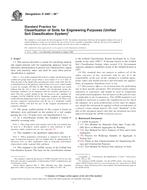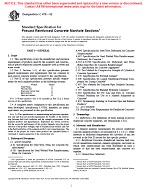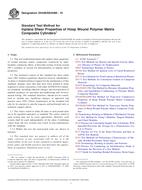1.1 This practice is used to determine the concentration of gaseous hydrogen cyanide (HCN) from any combustion device or atmosphere where cyanide may be present. While primarily designed for the measurement of gas phase HCN, the sample collection described in this practice also includes cyanide ion (CN–) absorbed particles that may be present in the sampling atmosphere.
1.1.1 Samples can be collected from a closed chamber such as the NBS smoke box described in Test Method E662 provided it is equipped with sampling ports.
1.1.2 Open chambers such as industrial work areas or large scale fires can be monitored for HCN with this practice.
1.1.3 The HCN emissions of a flow through system can be determined by sampling from its discharge stack. Examples of such systems include large scale manufacturing applications and the cone calorimeter described in Test Method E1354.
1.2 This practice can be used to monitor HCN levels in lab scale fire smoke effluents in order to estimate toxicity of gases produced from burning materials. See Guide E800.
1.3 The concentration range of hydrogen cyanide will be dependent on the volume of gas sampled, the volume of sodium hydroxide solution placed in the impinger during sampling, and the analytical method used to measure cyanide. For example, the lower limit of detection would be 0.002-mg/m³ when 0.1-m³ of combustion effluent is collected into 100-mL sodium hydroxide solution based on a detection limit of 0.002 mg/L cyanide in the impinger solution when using the flow injection analysis (FIA) system described in Test Method D6888.
1.4 This standard does not purport to address all of the safety concerns, if any, associated with its use. It is the responsibility of the user of this standard to establish appropriate safety and health practices and determine the applicability of regulatory limitations prior to use.
Product Details
- Published:
- 03/01/2011
- Number of Pages:
- 5
- File Size:
- 1 file , 110 KB
- Redline File Size:
- 2 files , 190 KB


